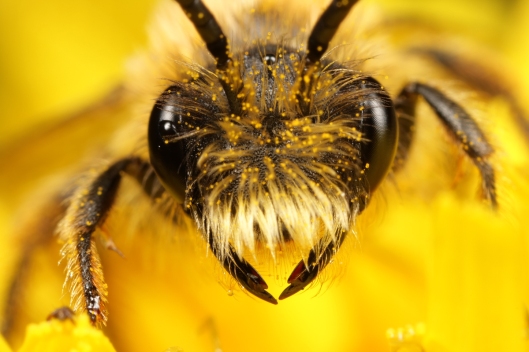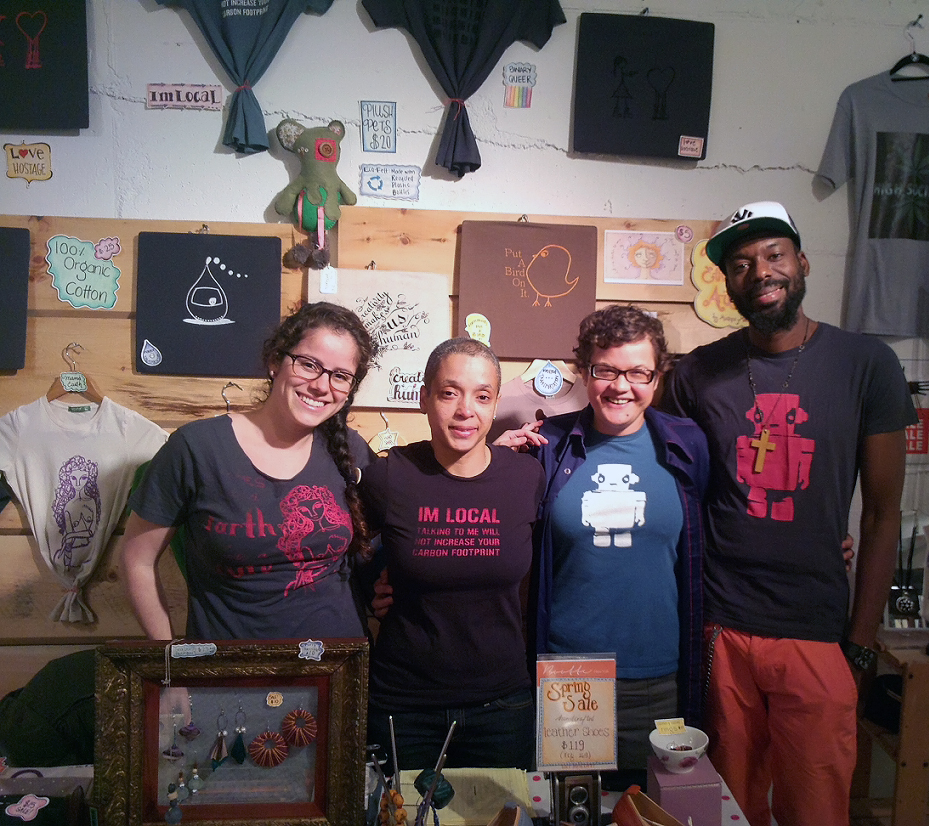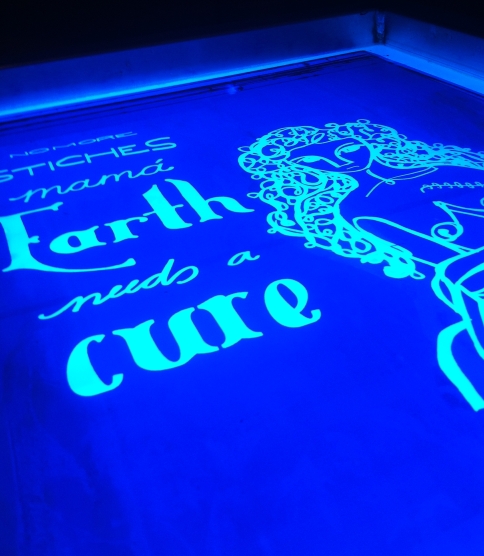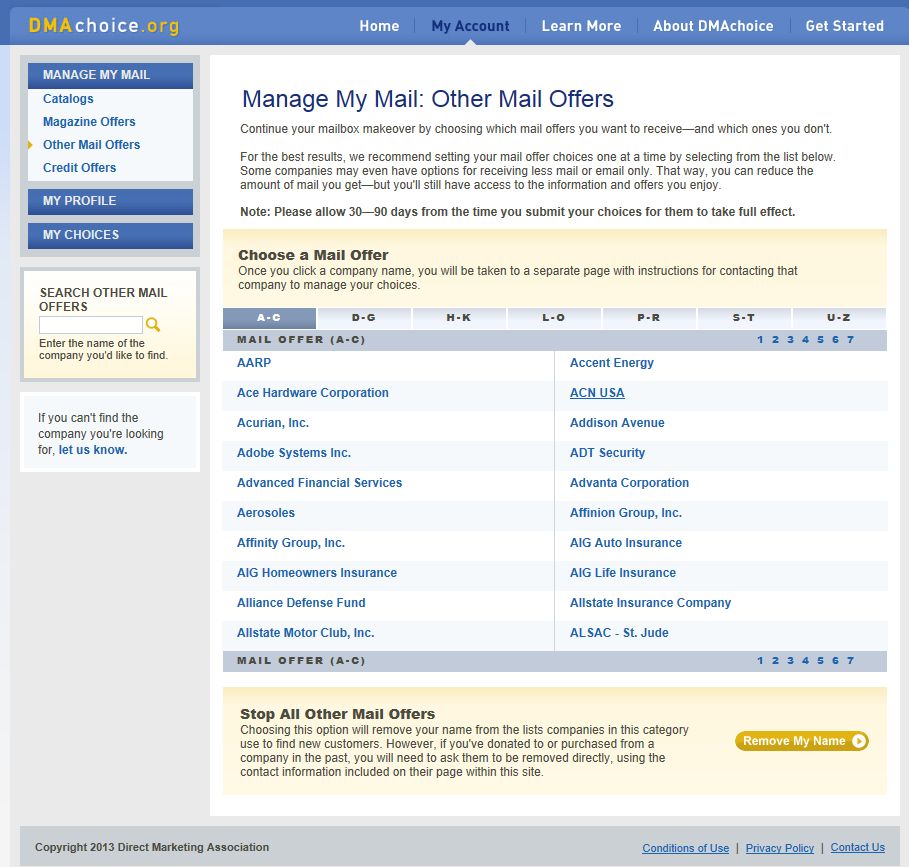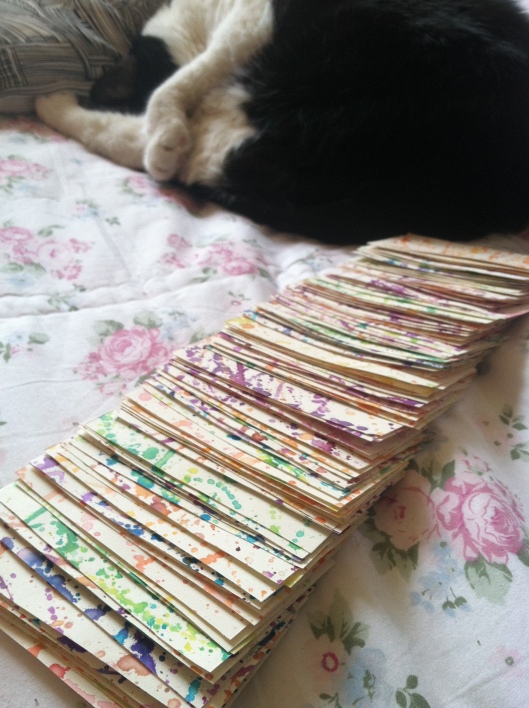In the fall of 2006, newspapers around the United States began to publicize a unnerving phenomenon. Honeybees were a mysteriously disappearing from beehives all around the nation. Dave Hackenburg, a outspoken beekeeper, and the first to raise a stir about the crisis, reported that bees were simply vanishing from his hives. That fall, beekeepers and commercial beekeeping enterprises around the country reported losses of 30% with some beekeepers reporting losses up to 90% of all of their colonies.
I want to post a quick review about this wonderful documentary, Queen of the Sun: What are Bees Telling Us?, and just an overall shout out to the hard workers who keep us fed and alive…The Bees in our world!
It is incredible how much I learned yesterday watching this, and it’s also a bit chilling to know that these little animals are at incredible risk of disappearing from this earth, and even more daunting, our system of agriculture disappearing with them. Meaning, we are at risk as well. Our whole ecosystem actually!
From how bees choose their beekeepers, to laws banning communities from bee-keeping, to the mass production and mass destruction of honey and bees, this film really shines a light on these little workers that pollinate and do so much for us. Of course, it forms a full circle and goes back to the root of many of our agricultural conundrums in our world: Massive industrial agriculture and factory farming and how it is destroying our world. Can you believe that factory farmers actually feed CORN SYRUP to the producers of honey!?!?! I found this disgusting, outrageous, and it hurt me so much.
So what to do to help bees? The producers, filmmakers and beekeepers that put together this film have given us helpful things that we can do to keep this beautiful little creatures in our world today. So let’s get started!
1. PLANT BEE FRIENDLY FLOWERS AND FLOWERING HERBS IN YOUR BACKYARD
Bees are losing habitat all around the world due to intensive monoculture-based farming practices, pristine green (but flower-barren) sprawling suburban lawns and from the destruction of native landscapes. Just planting flowers in your garden, yard, or in a planter will help provide bees with forage. Avoid chemically treating your flowers as chemicals can leach into pollen and negatively affect the bees systems. Plant plenty of the same type of bloom together, bees like volume of forage (a sq. yard is a good estimate).
Here are a few examples of good plant varieties: Spring – lilacs, penstemon, lavender, sage, verbena, and wisteria. Summer – Mint, cosmos, squash, tomatoes, pumpkins, sunflowers, oregano, rosemary, poppies, black-eyed Susan, passion flower vine, honeysuckle. Fall – Fuschia, mint, bush sunflower, sage, verbena, toadflax. For a great list of plants honeybees love click here
——-
2. WEEDS CAN BE A GOOD THING
Contrary to popular belief, a lawn full of clover and dandelions is not just a good thing—it’s a great thing! A haven for honeybees (and other native pollinators too). Don’t be so nervous about letting your lawn live a little. Wildflowers, many of which we might classify as weeds, are some of the most important food sources for native North American bees. If some of these are “weeds” you chose to get rid of (say you want to pull out that blackberry bush that’s taking over), let it bloom first for the bees and then before it goes to seed, pull it out or trim it back!
——-
3. DON’T USE CHEMICALS OR PESTICIDES TO TREAT YOUR GARDEN
Yes, they make your lawn look pristine and pretty, but they’re actually doing the opposite to the life in your biosphere. The chemicals and pest treatments you put on your lawn and garden can cause damange to the honeybees systems. These treatments are especially damaging if applied while the flowers are in bloom as they will get into the pollen and nectar and be taken back to the bee hive where they also get into the honey—which in turn means they can get into us. Pesticides, specifically neo-nicotinoid varieties have been one of the major culprits in Colony Collapse Disorder.
——-
4. BUY LOCAL, RAW HONEY
The honey you buy directly sends a message to beekeepers about how they should keep their bees. For this reason, and for your own personal health, strive to buy local, raw honey that is from hives that are not treated by chemicals. It can be hard to find out what is truly “local” and truly “raw”–and even harder yet to find out what is untreated. Here’s a few guidelines: If you find it in the grocery store and it’s imported from China, don’t buy it. There have been a number of cases recently of chemically contaminated honey coming from China. If it’s coming from the grocery store, but it doesn’t say the words “pure” or “raw” and you can’t read in the description that it’s untreated by chemicals, don’t buy it. If it’s untreated, the label will say, as this is an important selling point. We recommend a simple solution for most people. Go to your farmer’s market and shake hands with the beekeepers you meet. There are beekeepers at nearly every farmer’s market selling their honey and other products. Have a conversation with them, find out what they are doing to their hives, and how they are keeping their bees. If they are thoughtful, respectful beekeepers who keep their bees in a sustainable, natural way, then make a new friend and support them!
——-
5. BEES ARE THIRSTY. PUT A SMALL BASIN OF WATER OUTSIDE YOUR HOME
You may not have known this one—but it’s easy and it’s true! If you have a lot of bees starting to come to your new garden of native plants, wildflowers and flowering herbs, put a little water basin out (a bird bath with some stones in it for them to crawl on does a nice trick). They will appreciate it!
——-
6.BUY LOCAL, ORGANIC FOOD FROM A FARMER THAT YOU KNOW
What’s true for honey generally holds true for the rest of our food. Buying local means eating seasonally as well, and buying local from a farmer that you know means you know if that food is coming from a monoculture or not. This is much easier in the summer when you can get your fresh produce from a local farmer’s market. Another option is to get your food from a local CSA (Community Supported Agriculture) Farm. Keep in mind, USDA Organic Certification can be expensive and you may find many great farmers and beekeepers with excellent food and honey that isn’t USDA certified simply because they don’t produce a high quantity or opt for the expense of certification. Don’t let this get in the way of supporting them and if you’re worried about their products—have a conversation with them. (Note – A huge challenge for beekeepers is to keep their bees in an area where there is no chemical spray within 3 miles, as this is really what is required to guarantee truly organic honey. All the more reason for us all to avoid the use of harsh chemicals.)
——-
7. LEARN HOW TO BE A BEEKEEPER WITH SUSTAINABLE PRACTICES
Look up a local bee association that offers classes with natural approaches in your community and link up. Visit our resources & links page to start reading and exploring first steps!
8. UNDERSTAND THAT HONEYBEES AREN’T OUT TO GET YOU
Honeybees are vegetarians. They want to forage pollen and nectar from flowers up to three miles from their hive and bring that food back to provide food for themselves and the beehive. Contrary to what the media might have us believe, they are not out to sting us. Here are a few tips to avoid getting stung. 1. Stay still and calm if a bee is around you or lands on you. Many bees will land on you and sniff you out. They can smell the pheromones that come with fear and anger it can be a trigger for them to sting you. 2. Don’t stand in front of a hive opening, or a pathway to a concentration of flowers. Bees are busy running back and forth from the hive, and if you don’t get in their way, they won’t be in yours. 3. Learn to differentiate between honeybees and wasps. Honeybees die after they sting humans (but not after they sting other bees!), wasps do not. Wasps are carnivores, so they like your lunch-meats and soda. Honeybees are vegetarians. For a quick lesson on their differences click here.
——-
9. SHARE SOLUTIONS WITH OTHERS IN YOUR COMMUNITY
There are so many fun ways to help and be a voice for the bees. Share about the importance of bees at local community meetings, at conferences, in schools and universities, and on on-line message boards and forums. Let them know about QUEEN OF THE SUN and other great media out there that is in support of the honeybee.
Invite your friends and family to attend a screening of QUEEN OF THE SUN in your area. Find screening locations. – (You can also see it on Netflix “Watch it Now”.) Be part of our Community Screening Campaign by hosting a house-party or larger screening in your area! Click here to learn more.-If you are part of an educational institution, ask your institution to purchase an Educational DVD of QUEEN OF THE SUN (available HERE)

